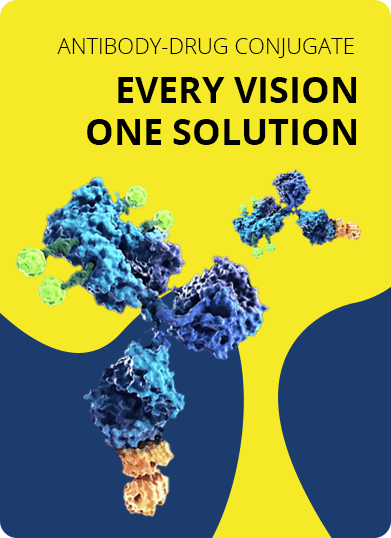- Home
- UTC Development
- Fragment-Drug Conjugate Development
- Antibody Fragment-Drug Conjugate Development
- Fab-Drug Conjugate Development
Fab-Drug Conjugate Development Services
For antibody-conjugated drug delivery system, the smaller antigen-binding fragments Fab are preferred because of their relatively high penetration speed into solid-tumor tissue. Armed with decades of working experience in the generation of antibody-drug conjugate (ADC), Creative Biolabs provides customized Fab fragment-drug conjugates (Fab-based FDCs) development services for worldwide clients. Our approaches enable you to make informed decisions on all components of the FDC structure so that the optimal candidate is developed for your target of interest in terms of stability and efficacy. Once the optimized FDC has been generated, the chosen candidate can be seamlessly transferred into our manufacturing stream, allowing the accelerated production of small batches of non-GMP FDCs.
Fab Fragments
Fab fragments comprise the constant and variable domains of immunoglobulin (Ig), linked by a single disulfide bond present at the C-terminus. A popular route to Fab fragments is the proteolytic digestion of Ig. By carefully altering experimental parameters, it is possible to produce either Fab or F(ab)2 fragments from a variety of IgG scaffolds. Popular enzyme choices include pepsin, papain, and ficin. However, this method only applies to the circumstance where yields are not a priority. For extra functionality and complexity, it is better to engineer and express Fab fragments by various expression systems. Mammalian cells are the preferred expression system for the protein of this size (∼50 kDa) and complexity. The choice of approach should be determined on a case-by-case basis.
Fab-based FDCs Examples
There have been many reports about successful Fab-based FDCs generation.
Conjugation Technologies
There are a range of Fab drug conjugation technologies available with each having their own benefits, though no single option is optimal for every payload and antibody. Fab fragments present multiple native sites for payload conjugation. Recent techniques for modifying Fab fragments target the disulfide bond present at the C-terminus of the fragment. Besides, engineered approaches such as introduction of a cysteine residue at a specific location are also available. Creative Biolabs offers access to a variety of conjugation technologies for evaluation.
Cysteine Conjugation
Cysteine conjugation following the reduction of the single disulfide bond present at the C-terminus of Fab fragment is a widely used strategy for preparing Fab-based FDCs. Various rebridging methods have been developed for the generation of homogenous Fab-based FDC. Creative Biolabs has extensive experience in the use of maleimides and other commonly used conjugation technologies for conjugation to cysteines. For more information about rebridged Fab-based FDCs, please refer to Fab-drug conjugation by rebridging methods.
Lysine Conjugation
Lysine-based conjugation is one of the most widely used non-specific conjugation strategies. The side-chain amino groups of lysine residues are good nucleophiles and can be used as sites for drug conjugation. Creative Biolabs has extensive experience in producing Fab-based FDCs using the lysine conjugation approach.
Tyrosine Conjugation
Comparing to the above two conjugation approaches, surface accessible tyrosine residues are rare and their phenolic hydroxyl groups are chemically active to serve as conjugation sites. Creative Biolabs also offers a sophisticated novel strategy to conjugate toxins to Fab via the native amino acid tyrosine.
Other Approaches
Besides, Creative Biolabs also supplies a range of Fab modification methods for the development of Fab-based FDCs. These include standard and novel chemical modifications, the incorporation of unnatural amino acids, enzymatic approaches such as transglutaminase-based methods.
With expertise and dedication, advanced FDC design platforms and services from Creative Biolabs will be your best companion in creating customized FDCs. Please contact us for more information and a detailed quote.
Related Services
For Research Use Only. NOT FOR CLINICAL USE.

Online Inquiry
Welcome! For price inquiries, please feel free to contact us through the form on the left side. We will get back to you as soon as possible.
